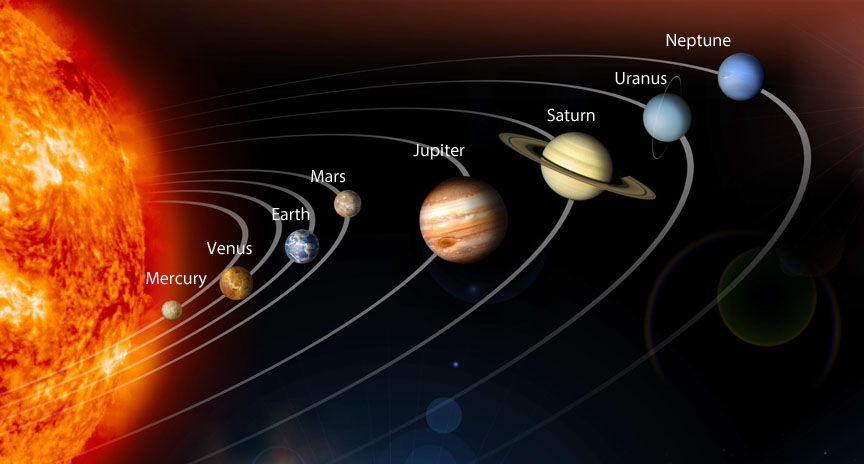Take this Planet Quiz to find out which planet you are. We update the quiz regularly and it’s the most accurate among the other quizzes.
These definitions were not universally accepted by astronomers and planetary scientists. To some, the categorization scheme looked to be designed to limit the number of planets; to others, it was incomplete and the terminology was ambiguous. Some astronomers feel that location (context) is crucial in understanding the genesis and evolution of the solar system.
One approach is to simply define a planet as a natural object in space with enough mass to be roughly spherical due to gravity. Some scientists, however, complained that this simple definition does not account for the degree of measured roundness required for an object to be termed round. In fact, determining the outlines of some faraway objects can be challenging. Others say that where an object is placed or what it is composed of matters and that dynamics, that is, whether or not an object sweeps up or scatters away its near neighbors, or keeps them in stable orbits, should not be considered. The heated debate about planethood rages on.
The universe appears increasingly intricate and exciting as our knowledge deepens and expands. Researchers have discovered hundreds of extrasolar planets, or exoplanets, that exist outside our solar system; the Milky Way Galaxy alone may contain billions of exoplanets, some of which may be habitable (have conditions favorable to life). It remains to be examined whether our definitions of the planet can be applied to these newly discovered objects. Also, you must try to play this Planet quiz.
Planet Quiz
Mercury is the closest planet to the sun, zipping around in only 88 days, and it’s also the tiniest, only slightly larger than Earth’s moon. Mercury’s day and night temperatures shift dramatically because it is so close to the sun (approximately two-fifths the distance between Earth and the sun). Daytime temperatures can go to 840 F (450 C), which is hot enough to melt lead. Temperatures at nightfall to minus 290 degrees Fahrenheit (minus 180 C).
Venus, the second planet from the sun, is the size of Earth. Radar scans taken beneath its atmosphere indicate a variety of mountains and volcanoes on its surface. Aside from that, the two planets couldn’t be more dissimilar. Venus is an extreme example of the greenhouse effect due to its dense, deadly atmosphere made up of sulfuric acid clouds. It’s blisteringly hot, even hotter than Mercury. The average temperature of Venus’s surface is 900 degrees Fahrenheit (465 C). The pressure at the surface would crush and kill you at 92 bar. And, strangely, Venus spins slowly from east to west, the opposite way as the majority of the other planets.
Earth, the third planet from the sun, is a Waterworld, with the ocean covering two-thirds of the planet. It’s the only known world with life. Nitrogen and oxygen are abundant in the Earth’s atmosphere. At the equator, the Earth’s surface revolves on its axis at 1,532 feet per second (467 meters per second) — little more than 1,000 mph (1,600 kph). The earth travels around the sun at a rate of more than 18 miles per second (29 km per second). You will find which Planet you are in this Planet quiz.
Mars is the fourth planet from the sun, and it is a chilly, desert-like world coated with dust. This dust is composed of iron oxides, which give the planet its distinctive red color. Mars is rocky, features mountains, valleys, and canyons, and storm systems that range from small tornado-like dust devils to planet-engulfing dust storms.
About the quiz
Jupiter, the fifth planet from the sun, is a gigantic gas world that is the most massive planet in our solar system, weighing more than twice as much as all the other planets combined, according to NASA. Its swirling clouds are multicolored due to various trace gases.
Saturn, the sixth planet from the sun, is most known for its rings. When the polymath Galileo Galilei first investigated Saturn in the early 1600s, he thought it was a three-part object with a planet in the center and two enormous moons on either side.
Uranus, the seventh planet from the sun, is an exception. It features hydrogen sulfide clouds, the same component that makes rotting eggs smell so bad. It rotates from east to west, similar to Venus. However, unlike Venus or any other planet, its equator is roughly perpendicular to its orbit – it effectively orbits on its side. Astronomers believe Uranus was tilted by a collision with an object twice the size of Earth around 4 billion years ago. Because of this tilt, extreme seasons span 20 years or more, and the sun shines on one pole or the other for 84 Earth-years at a time.
Neptune, the eighth planet from the sun, is roughly the size of Uranus and is noted for its supersonic strong winds. Neptune is frigid and far away. The planet is more than 30 times further away from the sun than Earth is. Before it was visibly spotted, Neptune was the first planet predicted to exist via arithmetic. Irregularities in Uranus’ orbit prompted French astronomer Alexis Bouvard to speculate that another planet might be exerting a gravitational drag. Johann Galle, a German astronomer, utilized mathematics to help identify Neptune through a telescope. Neptune is around 17 times the size of Earth and contains a rocky core.
For more personality quizzes check this: Free Enneagram Test.




